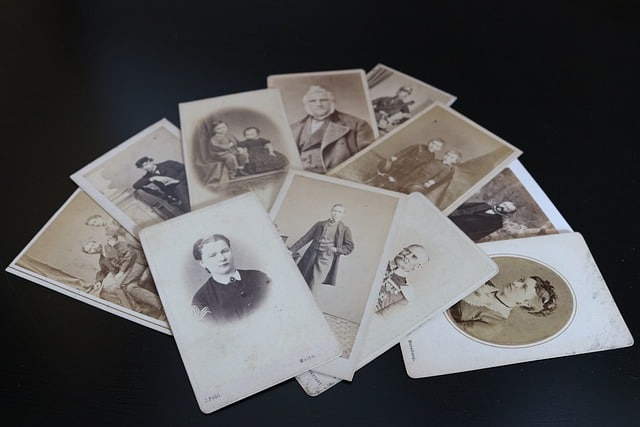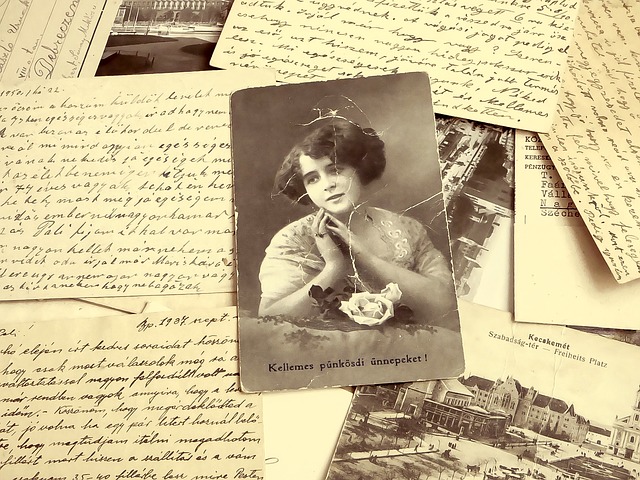Bridging Generations: How Ghostwriters Help Memoirists Connect with Younger Audiences
November 13, 2024
Memoirs can provide a portal into the past because they contain stories about personal histories, family values, and life lessons. However, to create a memoir with the potential to transcend generations, it must feel relatable to readers in the present day. A memoir that crosses generations must be more than the memories of a client’s life; it must have the power to engage contemporary readers.
This is where the ghostwriter can step in. The best ghostwriters help memoirists translate their stories for the next generation, offering insights that bridge the past and present and framing timeless themes in modern narrative terms. They help make family histories feel relevant, shaping personal experiences in ways that younger readers can relate to. They also ensure that our stories endure, deepening bonds between family members and keeping history alive for generations to come.
The Role of a Ghostwriter in Making Memoirs Relevant for Younger Generations
Creating a memoir that appeals to younger readers requires more than just transcribing a story from one era to another. Younger readers might not instantly relate to the social mores, obstacles, or values of the author’s generation, which may be years or even decades removed.
Recreating those experiences for the reader requires translating them into a language that can be understood today. Ghostwriters can find a current connection in clients’ stories, highlighting universal themes and presenting them in a writing style that younger readers can relate to.
Understanding Contemporary Contexts
Ghostwriters begin by building a solid understanding of both the memoirist’s experiences and today’s culture.

By identifying ways to translate those personal experiences into insights that feel current and relevant to younger readers, they connect the past and present.
For example, a story about a career path from the 1960s or ’70s might resonate with a younger reader if framed through the lens of a timeless value — such as ambition, resilience, or self-discovery — that can be specifically tailored to appeal to today’s readers and their perspectives.
Highlighting Universal Themes
By identifying and underscoring themes that transcend generations — whether perseverance in the face of hardship, the meaning of identity, or the significance of family — ghostwriters help create a story that is both personal and universally applicable. These themes serve as a bridge between generations and time periods, helping readers see themselves in the author’s past experiences and recognize how those experiences echo their own.
When these themes are clearly woven into the memoir’s structure, the message will resonate with readers of all ages, allowing even a young audience to see themselves in the story.
Techniques for Translating Personal Experiences Across Generations
Ghostwriters employ various methods to make a memoir accessible to younger readers, helping them see an author’s experience as relatable, palatable, and relevant—even if that experience took place at different time and place.
Modernizing Language and Tone
Ghostwriters can use the client’s words to convey their deepest thoughts, but without their help, the phrasing and sentence structure might sound outdated to younger readers, filled with lingo and language styles from previous decades. Ghostwriters work to eliminate these anachronisms so that younger readers don’t trip over the language and lose track of the narrative.
Utilizing Pop Culture and Historical Context
Ghostwriters often pepper memoirs set in the past with references to cultural events, trends, or historical milestones that readers can connect with to make the scenes feel more immediate. These references are framed in a way that ensures readers who are not already familiar with that era can still understand them. For instance, mentioning a cultural touchstone like the moon landing or the Civil Rights Movement can include some context, reminding readers of the author’s experiences while giving less well-versed readers a way into the story.
Incorporating Visual Elements
Because younger readers are accustomed to visual storytelling, ghostwriters often advise including photographs, timelines, or even maps as part of the family story.

Pictures help readers make sense of complex family histories or pinpoint specific moments and events. They can also help situate the setting of a particular story.
Visuals refresh a memoir and give it a more ‘new media’ look. They can also be interpreted in different ways, expanding the text and stretching the story from the page to the internet.
These pictures add depth and dimension to the reader’s experience, turning a real-life story into a more compelling and engaging read.
Engaging Younger Readers Through Narrative Techniques
Ghostwriters bring a storytelling approach that’s more engaging and immersive than the typical chronological memoir. This approach treats the memoir like a narrative journey, intentionally crafted to capture the emotions of readers accustomed to fast-paced, dynamic media.
By structuring events to build tension, reveal insights, and evoke empathy, ghostwriters make the story feel like a journey that holds the reader’s attention and resonates on a deeper level.
Focusing on Story Arcs and Pacing
Instead of crafting the memoir purely chronologically, ghostwriters often create story arcs around particular themes, turning the life experience into chapters that have their own narrative arc and weight.
This approach allows for narrative momentum and enables younger readers to see how the memoir unfolds with dialogue, drama, and tension.
Pacing is controlled to ensure that the big emotional moments are given space to breathe, while lighter, quicker moments keep the story moving. Readers will feel and live the highs and lows of the story, leading to a more immersive and emotionally resonant experience.
Using Relatable Anecdotes and Emotions
Ghostwriters often choose epiphanies that reflect universal experiences — whether it’s a pang of self-doubt, a major life shift, or a milestone that signals a change of some sort. This approach entices younger readers by showing them something they’ve already felt or will likely feel, making the memoir more personally relatable. By using emotions that the reader can recognize — surprise, disappointment, delight, discovery — ghostwriters humanize the overarching story, making the memoirist’s journey feel more relatable.
Adding Reflections and Life Lessons
Reflections and insights help ghostwriters transform narrowly tailored descriptions of life events into more widely applicable lessons that readers of any age can learn from.

For example, a client’s reflections on overcoming adversity can offer a younger reader a perspective on resilience that they might otherwise have to discover on their own.
Rather than merely recounting the event, the ghostwriter emphasizes the client’s reflections on what the event taught them, inviting readers to consider how a similar lesson might apply to their own lives. As a result, the memoir becomes a story about both the client and the reader.
Balancing Authenticity with Accessibility
To appeal to young readers, ghostwriters must weave the client’s distinctive voice with a style that feels familiar and contemporary. This process requires careful consideration to reflect the client’s reality and tone without alienating readers unaccustomed to the past.
As ghostwriter David R. Stokes puts it, “The key is to take the reader on a journey, in the most natural way possible, through someone else’s eyes, but in a way they understand and relate to.”
By translating personal experiences into universal language, ghostwriters help ensure that the client’s story resonates across generations without losing its authenticity.
Preserving the Client’s Unique Voice
The ghostwriter must carefully replicate the client’s personality, language, and attitude to ensure the memoir is faithful to the author’s voice while making language and style changes that bring it into the present. This allows the younger reader to hear the client’s voice in terms they can relate to, rather than in old-fashioned language or stilted formulations.
It is this distinctive voice that gives the memoir its authenticity and accessibility.
Respecting Historical Accuracy While Making Connections
Ghostwriters must balance historical context carefully: a client may have lived through the Second World War, but their readers might not have.
To bring the past into the narrative, ghostwriters must frame historical events in a way that’s meaningful to modern readers without altering their meaning.

For example, if the client had a social or political complaint from their youth, the ghostwriter might draw a parallel to an equivalent issue today. This helps create a generational bridge while respecting the reality of the client’s own experience. The ghostwriter ensures that readers of all ages can see how the past still echoes in the present.
Ghostwriters’ sensitivity to these factors helps maintain the memoir as an honest record of the client’s life while making it accessible, compelling, and relevant to younger readers.
A careful balance of authenticity and relatability keeps the memoir rooted in its time and place while helping it transcend the era.
Building Lasting Family Legacies Through Cross-Generational Memoirs
A great memoir connects with readers across generations, transmitting a personal history — and a connection — to those who come after. Ghostwriters translate the client’s story for contemporary audiences, while still preserving the authentic voice of the client.
In some cases, a ghostwriter can reframe an older narrative using universal touchpoints, relatable moments, and a balance of historical accuracy and modern-day accessibility. With the right ghostwriter, memoirists can connect their life story to the lives of future generations.
For families, a memoir adapted to resonate with a young audience becomes not only a chronicle of the past but a legacy that captures the values, lessons, and experiences defining who they are. With each passing year, these stories become part of the family’s legacy, helping future generations understand where they come from. In this way, ghostwriters help create memoirs that go beyond a single life story, enriching family relationships and offering inspiration, connection, and continuity for years to come.






























